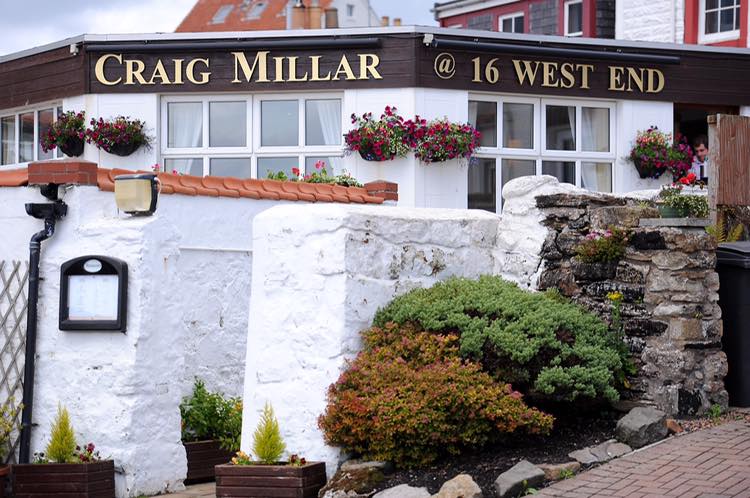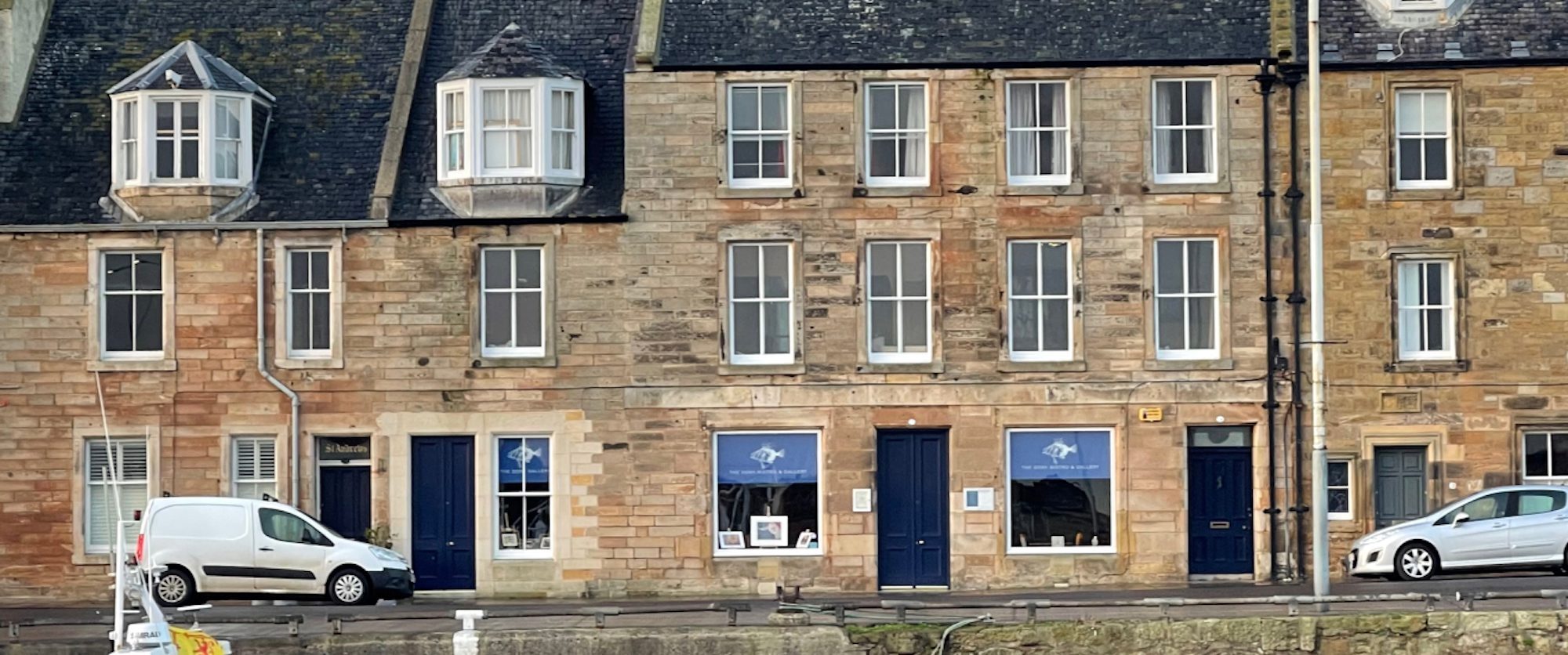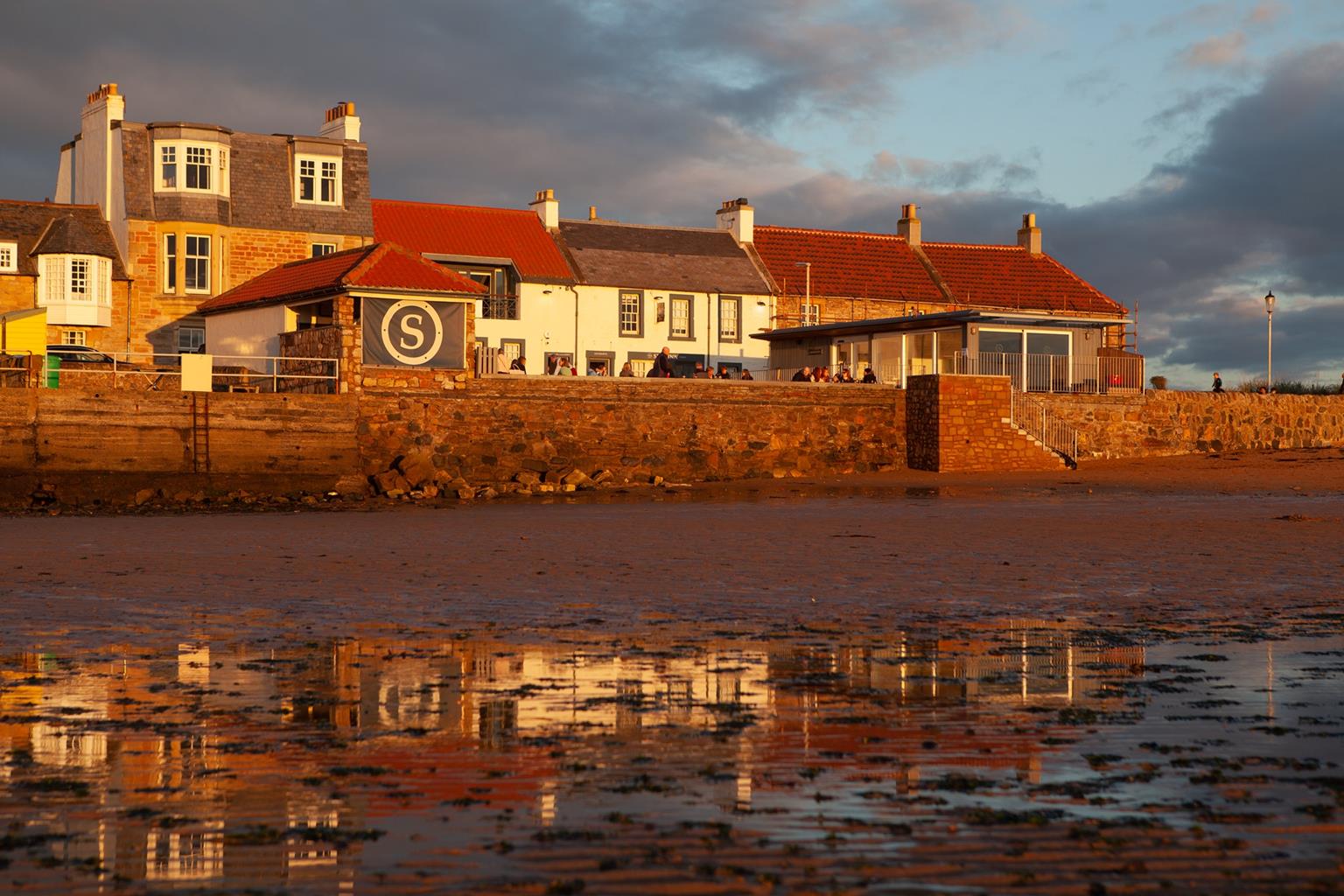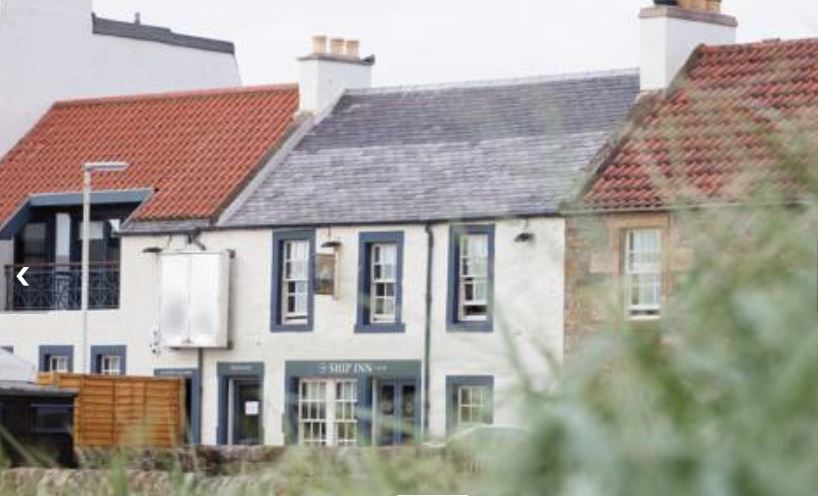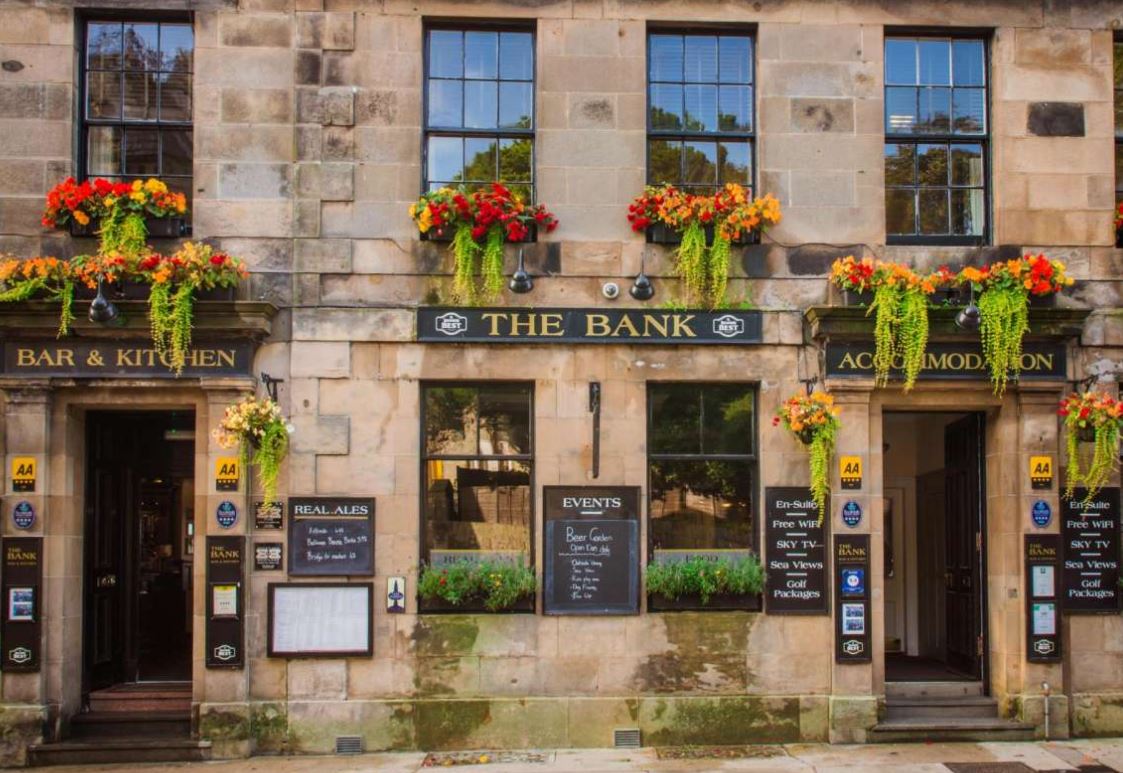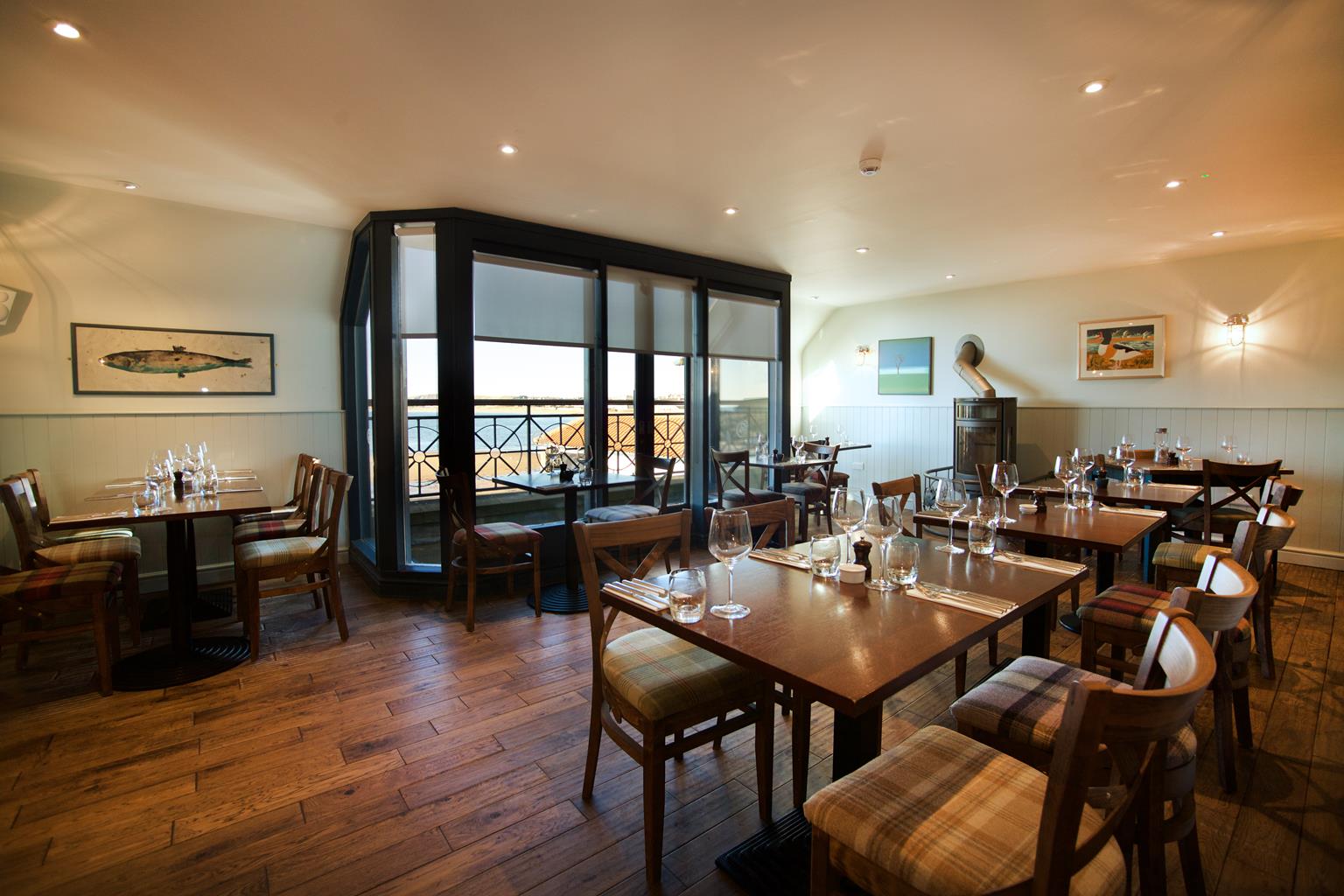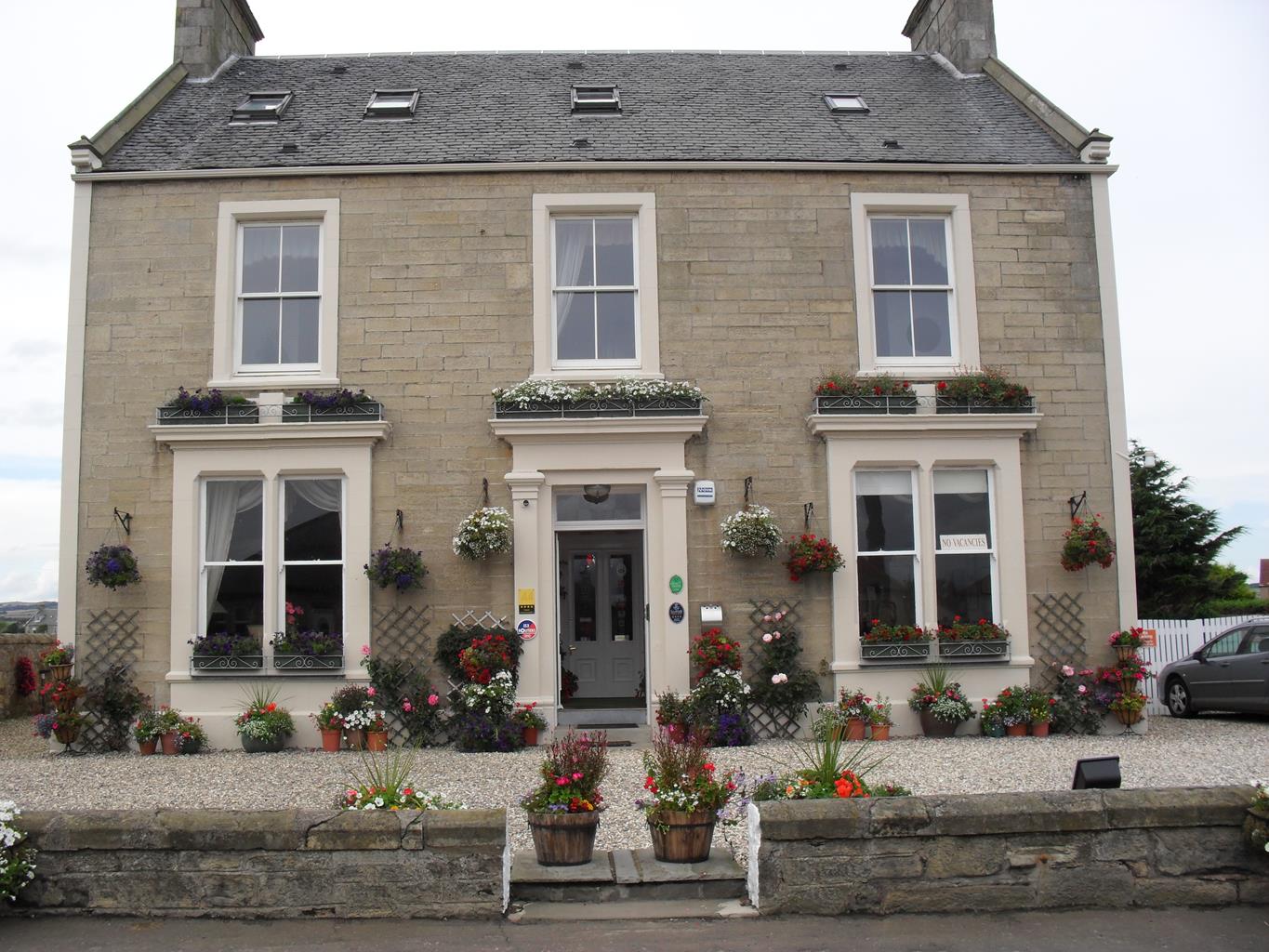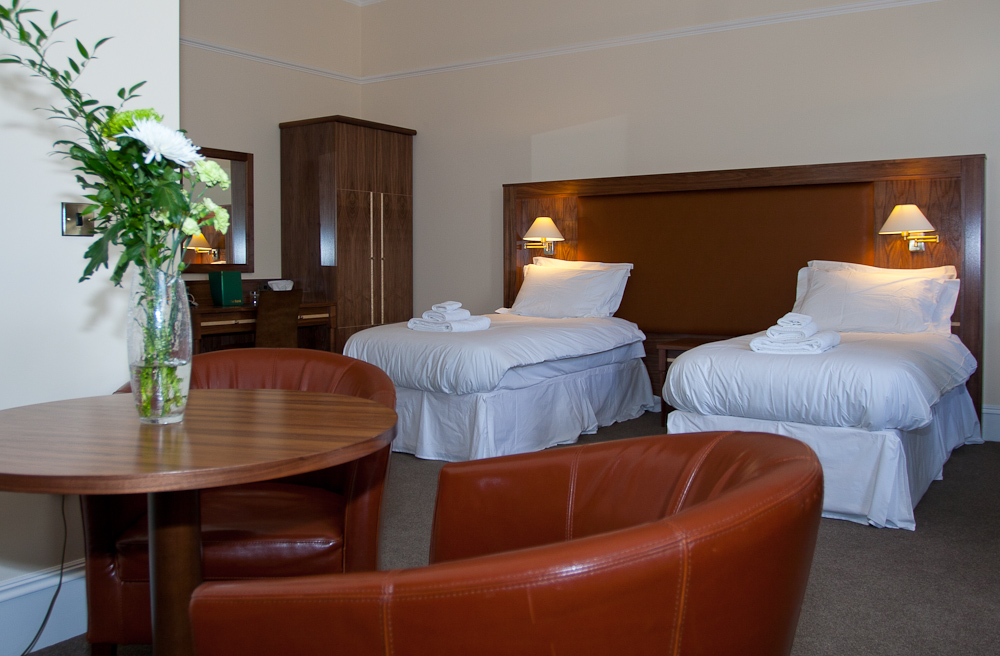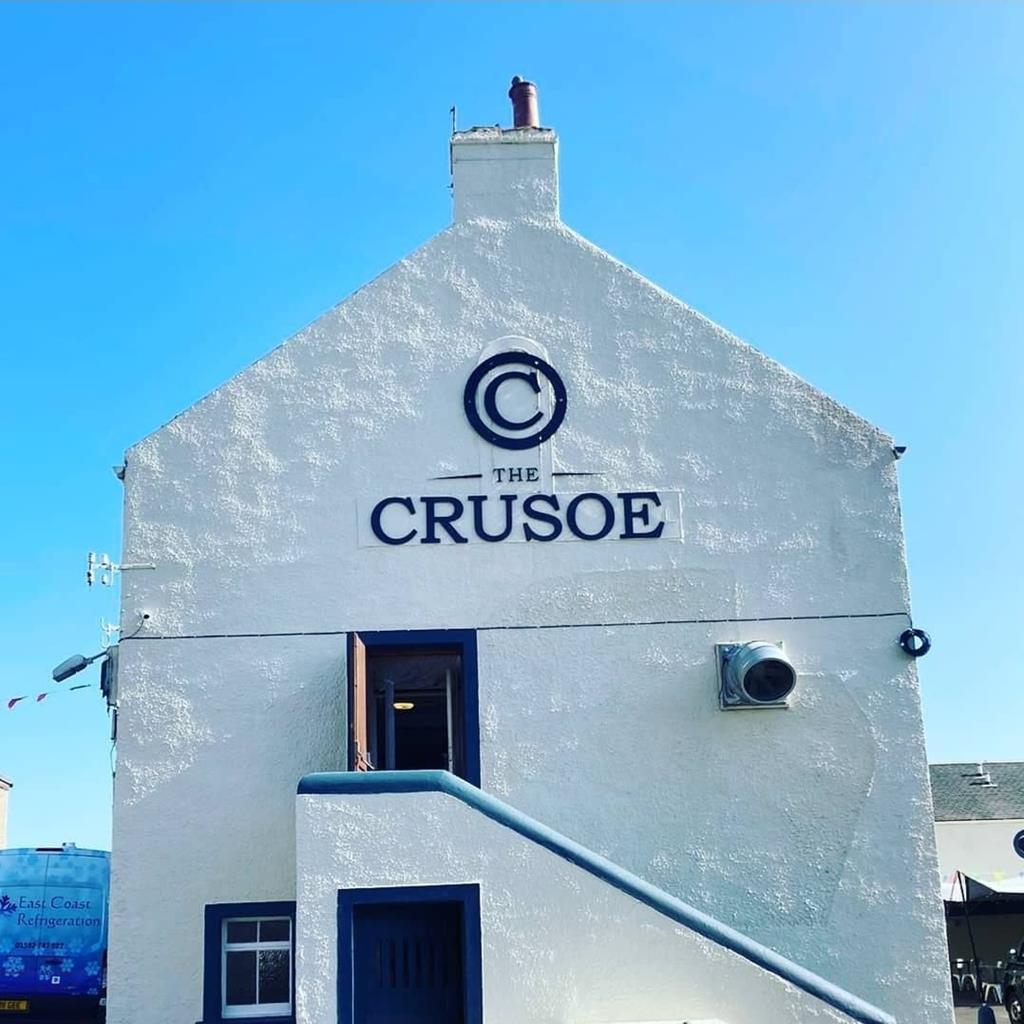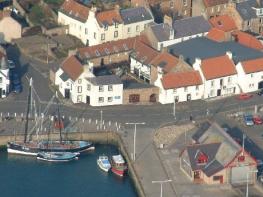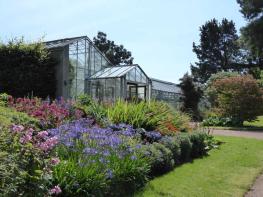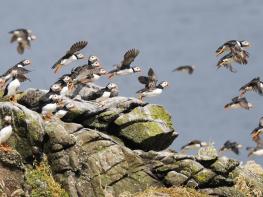You'd have to travel a long way to find views better than the ones from this inn. Overlooking…
Fife Coastal Path: St Monans to Leven

Pantiled villages in the Neuk of Fife
13.3 miles (21.4kms)
About the walk
Fife was a Kingdom of its own – but this western corner, the Neuk of Fife, was out-of-the-way even for Fife. When asked if he'd been abroad, one Fifer replied: "Well yes – I've been to Crail." Turning its back on the farmland and coalfields, the Fife coast was where fish was your food and your roadway was the sea.
Brown stone and pantiles
Slate is formed from the compressed (metamorphosed) ancient rocks of the Highlands, and there's no convenient sea shipping route from Ballachulish, near Glen Coe, to Fife. When it came to modernising its original roofs of thatch, Fife instead looked east across the sea. The cheerful orange roof tiles called pantiles arrived from the Netherlands, originally as ballast in ships emptied of their Scottish wool, salt, or coal. The 'crow-stepped' gable ends also betray a Flemish influence.
The local brownish-yellow sandstone forms harbour quays and the houses behind them. Top them off with red-orange roofs to give the villages of the East Neuk their charm, especially on a sunny day when the sea provides the complementary blue.
Robinson Crusoe in Lower Largo
One of those Fife sailor men was Alexander Selkirk, born in Lower Largo in 1676. With typical Fifer enterprise he attached himself to the Pirate Captain William Dampier in the South Pacific. And with Fifer canniness he spotted that the ship he was assigned to was in a bad state, and requested to be put ashore on a nearby island rather than sail on in something he judged soon to be sinking.
Selkirk spent 4 years on Juan Fernandez island, living on shellfish, wild goats and turnips. And yes, the ship he'd left, the Cinque Ports, did indeed sink. Once rescued, he returned to the life of a buccaneer, paying a brief return visit to Lower Largo to seduce a dairymaid. His fame, however, rests on the book Robinson Crusoe by the English journalist and part-time spy Daniel Defoe. Considered as being the first-ever novel, the book is based on Selkirk's adventure.
Seashells to snail shells
The links sands of Fife are rich in seashell fragments ('calcareous sands'). In May, lime-loving cowslips grow abundantly all along this coast. The Dumbarnie Links Nature Reserve shows wild flowers such as cranesbills and knapweed, and several sorts of butterflies. Snails need lime to form their shells with, and are abundant in the reserve, especially the 'brown-lipped' variety with brown-and-yellow striped shells.
Walk directions
Leaving St Monans harbour, the route passes attractive cottages before crossing the burn to the superb old church. The route below the church is tidal. At high tide walkers should follow the High Tide route signs inland alongside the edge of the village. Before an old railway arch you'll turn left along field edges to regain the coast at the ruin of Newark Castle.
The main walk continues by steps cut into the sea wall below the church and along the coast for 0.25 miles (400m) to Newark Castle.
A good path continues to, and through, the even older ruin of Ardross Castle and on past Elie’s golf course to Elie Ness and the Lady Tower, built for Lady Janet Anstruther in 1760 as a bathing hut. Here you cut across the peninsular of Elie Ness to the Ruby Bay car park, leading into the edge of Elie. It is worth going up to the main street of Elie to see the church, built by Sir William Scott of Ardross in 1638, with a bell-tower added a century later.
Follow streets near the sea through the linked villages of Elie and Earlsferry. At the village end, ignore a golfers' path on the right, but keep left to the coast at a ruined chapel. The walk continues on the seaward side of the Earlsferry Links golf course to approach the cliffs at Kincraig Point.
Continuing at sea level here would lead to the Elie Chain Walk, a demanding scramble with rock-cut footsteps and chains for handhold, rejoining the main path after 0.5 mile (800m). However, the Coastal Footpath makes a steep climb to the cliff-top, and goes over the headland. You will then reach Shell Bay, with its fine sweep of sand. Take the road and track skirting the large caravan park. At its end bear right through a tree strip, to reach Cocklemill Burn Bridge and the long, lovely curve of Largo Bay.
Follow the beach, or else the dune path through Dumbarnie Links wildlife reserve. The path improves as it takes to a former railway line into Lower Largo. Past the Crusoe Hotel, cross a road bridge and after a short rise, soon bear left down Drum Park to the sea.
At Lundin Links, take streets inland around the golf course until a track ahead bends left across the golf course to the sea. Continue along glorious sands beside golf courses (the high-tide route runs along the dunes behind the beach). As you approach Leven, if the tide is high you'll skirt inside a caravan park to the car park at its far end. Then just follow the promenade to the River Leven.
Additional information
Clear, waymarked paths, quite steep up to Kincraig Point; no stiles
Beaches and dunes, clifftops, and pretty fishing villages
On leads in towns and villages, and through caravan park
OS Explorer 370 Glenrothes North and 371 St Andrews
Ruby Bay at Elie; Lower Largo east end; Leven Links
St Monans; Elie Ruby Bay and harbour; Kincraig caravan site; Lower Largo east end; Leven Links
<p>Buses from Leven via Lower Largo and Elie to St Monans and St Andrews.</p>
WALKING IN SAFETY
Read our tips to look after yourself and the environment when following this walk.
Find out more
Also in the area
About the area
Discover Fife
This 20-mile wide peninsula between the Firth of Forth and the Firth of Tay is an ancient kingdom, once the home of Scotland’s kings and saints. Despite its modern bridges it still seems curiously detached from the rest of the country. Travelling along Fife’s grand coastline reveals a fascinating legacy of caves, castles, and ancient fishing ports. Blend coast and countryside by following stretches of the Fife Coastal Path, or take an exhilarating trek in the Fife Regional Park.
St Andrews has a unique place in Scotland’s heritage. According to legend, the city was founded by St Regulus in the 4th century, who was carrying relics of St Andrew, patron saint of Scotland, when his ship was wrecked off the coast. Thereafter, the town grew as an important religious centre, eventually home to the largest church in Scotland, now an attractive ruin, with the powerful bishops wielding great influence over church and state. Today, St Andrews is famous for its university, the oldest in Scotland, and as a world golfing mecca. The Old Course at the Royal and Ancient Golf Club claims to have 15th century origins and to play a round on these hallowed links is many golfers’ dream.
Nearby stays
Restaurants and Pubs
Nearby experiences
Recommended things to do
Why choose Rated Trips?
Your trusted guide to rated places across the UK
The best coverage
Discover more than 15,000 professionally rated places to stay, eat and visit from across the UK and Ireland.
Quality assured
Choose a place to stay safe in the knowledge that it has been expertly assessed by trained assessors.
Plan your next trip
Search by location or the type of place you're visiting to find your next ideal holiday experience.
Travel inspiration
Read our articles, city guides and recommended things to do for inspiration. We're here to help you explore the UK.

